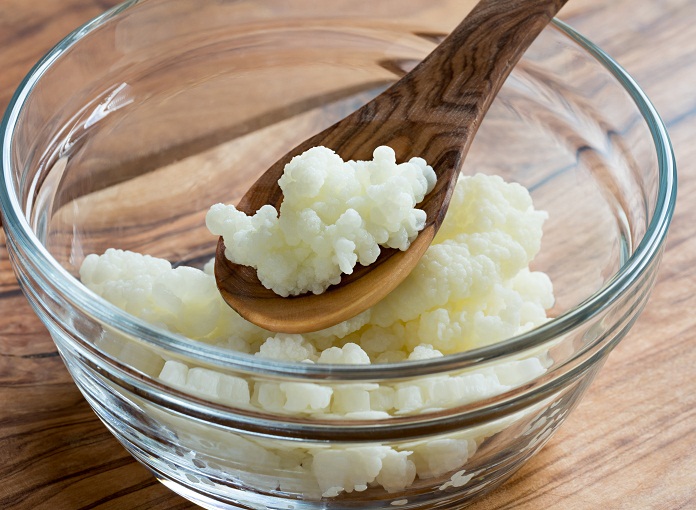What is milk Kefir?
Baptized the ‘dew of the gods’ Kefir is a fermented milk beverage made from culturing milk with live bacterial and yeast. The bacteria and fungi culture conglomerate and appear as small cauliflowers. The Kefir grains are said to have originated from the Tibet and the North Caucasus areas and were discovered in the mummies of Egypt showing that they date far back in the history of humanity.
Milk contains a sugar called ‘lactose’. The live cultures feed on the lactose producing a healthy, delicious yoghurt-like fermented drink that can be enjoyed by young and old alike. This drink is rich in probiotic bacteria and vitamins.
How to make milk kefir
As important as having a healthy live culture, is the use of whole or fresh organic milk for the process. Whereas pasteurized and ultra-heat-treated milk can be used, some nutrients may be lost from the milk during heating.
Unlike store-bought kefir, home-made kefir is free of any additives and preservatives thus making it a healthier option. It contains more probiotics than commercially-produced Kefir which often is made from powder or other starter cultures not Kefir grains. Making Kefir at home costs way less than purchasing the commercial drink. Because of the use of milk kefir grains, homemade kefir will contain a larger number of probiotics than commercial kefir. One will also have complete control over the milk you use (organic, non-homogenized, raw, etc.).
To begin making Kefir at home, one needs:
- Kefir starter grains
- A glass jar with a breathable cover
- Fresh milk
- A plastic or wooden spoon
- A plastic sieve
(Stainless steel can be used instead of plastic but other metals will cause the grains to die off)
Method:
- Clean and thoroughly rinse the glass jar and allow to dry
- Put the kefir grains in the clean glass jar and add fresh cooled milk
- Cover with a breathable cover or a cloth with a band around it (ensure the holes are small enough not to allow insects in or they will contaminate your milk)
- Allow to sit undisturbed on a counter top (do not refrigerate) for 24-36 hours
- The milk will now be ready to be sieved. Using a plastic sieve and spoon, sieve the milk onto a second container. The substrate can be taken or refrigerated for use later. Kefir can last up to two weeks in the fridge.
- Put the grains that remained on the sieve into another glass jar to start a fresh batch of kefir.
Caring for your Kefir grains
Remember your grains comprise a live culture of living organisms. In not well looked after, they die off. When not making a new batch of milk Kefir, store the grains in the fridge in a closed glass jar with a plastic lid. Every three weeks take them out, sieve away the old batch of milk (this can be drunk) and add fresh milk and return to the fridge until when it is required to make a fresh batch of Kefir milk. Kefir grains can last generations if well taken care of.
The benefits of taking milk Kefir are numerous. They range from balancing out our gut flora to weight management! Read more about that here.




